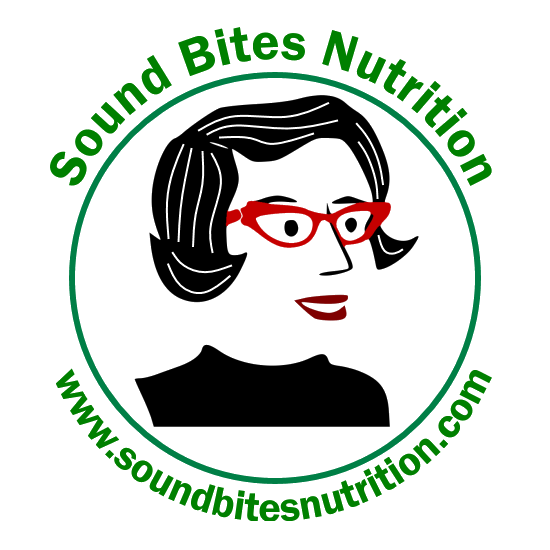A Whole Grain of Truth
 Whole grains are defined as the unrefined seeds of grasses used for food. They still contain all parts of the seed, including the bran and germ. Whole grains are a good source of fiber, B-vitamins and minerals such as magnesium, potassium, and selenium. The easiest way to determine if the food you are eating is whole grain is to look at the ingredient list. The first word should be whole, no matter what kind of grain is used (wheat, rice, corn, etc).When reading food packages, labels & ingredient lists don't get confused by the claims on the front of the box or the terms refined or enriched grains. Refined grains have been processed with the bran and germ removed resulting in an increased shelf life and finer texture. This is the grain used in making many of our breads, cereals, crackers, etc. The removal of the bran & germ also means the removal of the fiber, vitamins and minerals.Enriched grains are refined grains that have some of the nutrients added back in that were lost during processing. Some enriched grains become fortified grains, vitamins and minerals that were never in the whole grains are added. For example, folic acid and iron are commonly added to grains used for breads and cereal. The problem with the enriched or fortified grains is that most don't contain much fiber. The new Dietary Guidelines recommend that most of our servings of grains come from whole grains. Since September is National Whole Grain Month, we thought it might be helpful to pass along a few tips for getting your whole grain servings.Bite this:
Whole grains are defined as the unrefined seeds of grasses used for food. They still contain all parts of the seed, including the bran and germ. Whole grains are a good source of fiber, B-vitamins and minerals such as magnesium, potassium, and selenium. The easiest way to determine if the food you are eating is whole grain is to look at the ingredient list. The first word should be whole, no matter what kind of grain is used (wheat, rice, corn, etc).When reading food packages, labels & ingredient lists don't get confused by the claims on the front of the box or the terms refined or enriched grains. Refined grains have been processed with the bran and germ removed resulting in an increased shelf life and finer texture. This is the grain used in making many of our breads, cereals, crackers, etc. The removal of the bran & germ also means the removal of the fiber, vitamins and minerals.Enriched grains are refined grains that have some of the nutrients added back in that were lost during processing. Some enriched grains become fortified grains, vitamins and minerals that were never in the whole grains are added. For example, folic acid and iron are commonly added to grains used for breads and cereal. The problem with the enriched or fortified grains is that most don't contain much fiber. The new Dietary Guidelines recommend that most of our servings of grains come from whole grains. Since September is National Whole Grain Month, we thought it might be helpful to pass along a few tips for getting your whole grain servings.Bite this:
- Oats. The only ingredient in the package is 100% whole grain oats. Yes, they do require a little cooking but it's worth it. Oats are a great source of fiber, protein and iron without any sodium or added sugar. For convenience, cook enough for the whole week then reheat a serving daily. You'll have all the goodness of whole-grain with all the convenience of instant.
- Whole-grain cereal. A simple formula when choosing a box of cereal is 5 and 5 rule. Make sure your cereal choices have at least 5 grams of fiber, 5 grams of protein and no more than 5 grams of sugar. This formula will ensure your breakfast keeps you feeling full until lunch.
- Whole-wheat pasta. Ever have a big pasta dinner just to feel hungry in an hour or two? That won't happen with a serving of whole wheat pasta. The high fiber pasta will help you avoid blood sugar spikes and satisfy your appetite for hours.
- Brown rice. In addition to the higher fiber, vitamins and minerals, brown rice adds a nice nutty flavor to your casseroles & dishes. Just like oats, it can be cooked in batches to make it as convenient as the instant versions.
- Whole-grain breads. The first item on the ingredient list is whole (wheat, rye, oats, etc). Add some turkey, cheese, lettuce & tomatoes and you've got a meal!
Not that:
- Flavored, instant oatmeal. Instant is fast but at what cost? If it leaves you with more sugar and salt than fiber it’s not worth the convenience.
- Sugar-coated cereal. Don't get fooled by the Whole Grains claim on the front of the box. If sugar is the first or second item on the ingredient list your cereal is just going to leave you craving for more.
- Boxed or canned pasta dishes. They are convenient but they are made with enriched or fortified pastas, loaded with sodium and sugar and lacking fiber. And that convenience comes at a high price!
- Packaged rice dishes. Just like the pasta dishes, these dishes offer little more than convenience. Make your own rice dishes using brown rice.
- White or wheat bread. Why buy bread that's made with flour stripped of all the good stuff- fiber, vitamins & minerals. Remember, more processing before it goes in means less benefit for your body.
